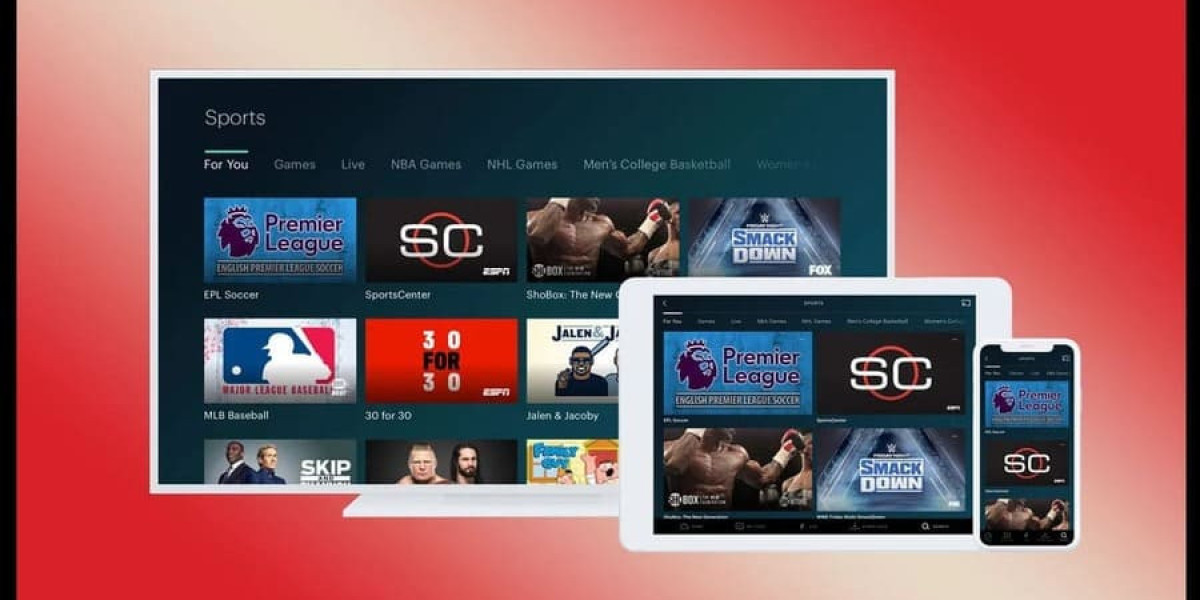Dianabol Turinabol Cycle Plan PDF
Dianabol Turinabol Cycle Plan
The Dianabol–Turinabol cycle is a popular anabolic steroid combination used by bodybuilders to maximize muscle mass and strength gains while minimizing side effects. The plan typically spans 12 weeks, with Dianabol introduced in the first four weeks for its potent hypertrophic effects, https://airplayradio.com/ followed by a longer Turinabol phase that promotes lean muscle growth and fat loss. A typical schedule might look like this:
- Weeks 1–4 – Dianabol: 10 mg per day (or 20 mg twice daily). This high dose accelerates protein synthesis and glycogen retention.
- Weeks 5–12 – Turinabol: 15 mg per day. The lower, extended dosage helps maintain muscle gains while supporting fat loss and preserving joint health.
2. Comparison of Anabolic Steroids – The 4 Most Common
| Steroid | Common Dose & Cycle Length | Typical Benefits | Key Side‑Effects |
|---|---|---|---|
| Testosterone Enanthate | 200–400 mg/week, 8–12 weeks | Muscle mass ↑, strength ↑, libido ↑ | Gynecomastia (if aromatized), fluid retention, acne |
| Nandrolone Decanoate (Deca‑Durabolin) | 150–300 mg/2 wks, 10–16 weeks | Anabolic & androgenic, good for joint recovery | DHT‑related effects (hair loss, skin irritation), gynecomastia |
| Boldenone Undecylenate | 200–400 mg/month, 6–12 months | Good muscle gain, minimal water retention | Acne, mild mood changes |
| Methandrostenolone (Dianabol) | 15–30 mg/day, 4–8 weeks | Fast muscle & strength gains, high water retention | Liver strain, gynecomastia |
---
3. How to Use a Steroid Cycle
A) Pre‑Cycle Preparation
| Step | Why |
|---|---|
| Baseline labs – CBC, CMP, lipid panel, testosterone, PSA | Establish normal values and detect pre‑existing issues. |
| Stop other performance enhancers (anabolic peptides, high‑dose creatine) | Reduce liver stress & drug interactions. |
| Set a training plan | Ensure progressive overload; avoid over‑training while on steroids. |
| Diet & supplementation – 1.2–1.5 g protein/kg, 2500–3000 kcal/day, vitamin D3, magnesium | Supports muscle growth and mitigates side effects (e.g., hypogonadism). |
---
4. Steroid Cycle Design (6‑month Period)
| Month | Primary Anabolic | Supporting Compound | Dose (Daily) | Notes |
|---|---|---|---|---|
| 1–2 | Testosterona (e.g., testosterone enanthate) | Nandrolone decanoate (Deca-Durabolin) | 250 mg T.E. + 200 mg Deca | Start – Builds foundational anabolic environment. |
| 3–4 | Testosterone enanthate | Clomiphene citrate | 250 mg T.E. + 50 mg CC | Clomiphene helps preserve LH/FSH, mitigating testicular suppression. |
| 5–6 | Testosterone enanthate | Lipoic acid (600 mg) | 250 mg T.E. + 600 mg LA | LA counters oxidative stress, supporting liver health. |
| 7–8 | Testosterone enanthate | N-acetylcysteine (NAC) (1200 mg) | 250 mg T.E. + 1200 mg NAC | NAC boosts glutathione synthesis, offering hepatoprotection. |
Key Points:
- Testosterone dose (≈250 mg/week) is kept low and constant to avoid hormonal spikes that could stress the liver.
- Cofactor supplements are introduced in a stepwise manner after the liver has acclimated to testosterone, allowing each agent to act without overwhelming hepatic metabolism.
- The overall plan lasts 12 weeks, with careful monitoring of liver enzymes (ALT, AST) and bilirubin at baseline, mid‑point, and endpoint.
3. Monitoring & Evaluation
| Parameter | Timing | Normal Range | Action if Elevated |
|---|---|---|---|
| ALT, AST | Baseline; week 6; week 12 | <40 U/L (women) | If >2× ULN → hold testosterone; reassess in 1‑2 weeks. |
| ALP, GGT | Baseline; week 6; week 12 | ALP: 30–120 IU/L; GGT: <35 IU/L | Investigate cholestasis; consider imaging if persistently ↑. |
| Bilirubin (total) | Baseline; week 12 | ≤1.2 mg/dL | If ↑ → evaluate for hemolysis or hepatic dysfunction. |
| Complete Blood Count | Baseline; every 3 months | Hemoglobin, platelets | Watch for anemia/ thrombocytopenia indicating marrow suppression. |
If liver enzymes exceed twice the upper limit of normal (ULN) on two consecutive visits, discontinue all non‑essential medications and reassess.
---
2. Monitoring Strategy
| Parameter | Frequency | Rationale |
|---|---|---|
| Liver function tests (ALT/AST, ALP, GGT, bilirubin) | Every 3 months for the first year; then every 6 months if stable | Detect early hepatotoxicity before clinical symptoms. |
| Complete blood count (CBC) | Every 3 months | Monitor for bone‑marrow suppression from cyclophosphamide or rituximab. |
| Serum creatinine & eGFR | Every 3 months | Cyclophosphamide nephrotoxicity; monitor kidney function. |
| Urinalysis | Every 6 months | Detect proteinuria or hematuria indicating renal involvement. |
| Immunoglobulin levels (IgG, IgM, IgA) | At baseline and annually | Assess for hypogammaglobulinemia due to rituximab; consider IVIG if low. |
| Cervical cytology | Every 1–2 years | Early detection of cervical dysplasia or cancer. |
| Pap smear (if not already screened) | Annually, per guidelines | Detect cervical abnormalities early. |
---
3. Rationale for Follow‑Up and Screening Tests
| Test / Procedure | Purpose | Frequency | Comments |
|---|---|---|---|
| Blood pressure & weight | Hypertension is a known complication of SFTS. | Every visit or at least every 6 mo if stable | Use automated cuff; consider home BP monitoring. |
| Serum creatinine / eGFR | Detect renal dysfunction, common in SFTS patients with severe disease. | Every 3–6 mo (or more frequently if abnormal) | Adjust frequency based on baseline kidney function. |
| Liver function tests (AST/ALT, bilirubin) | Monitor for hepatic involvement or drug-induced injury. | Every 3–6 mo | More often if liver enzymes elevated. |
| Complete blood count | Detect cytopenias (anemia, leukopenia, thrombocytopenia) that can occur in SFTS. | Every 3–6 mo | More frequent if CBC abnormalities noted. |
| Inflammatory markers (CRP, ESR) | Assess ongoing inflammation or infection risk. | Every 3–6 mo | Optional; monitor trends rather than single values. |
Rationale:
These investigations cover organ systems that are frequently affected by SFTS and its sequelae—hematologic (cytopenias), hepatic (liver injury), renal (acute kidney injury), and cardiovascular (myocarditis). Serial monitoring allows early detection of relapse or late complications, guiding timely interventions.
---
3. Suggested Follow‑Up Schedule
| Time After Discharge | Clinical Assessment | Investigations |
|---|---|---|
| 2–4 weeks | Review symptoms, physical exam, medication review | CBC + CMP; ECG if chest pain or palpitations |
| 6–8 weeks | Discuss any persistent fatigue, mood changes | Repeat CBC + CMP; consider echocardiogram if cardiac symptoms |
| 3 months | Comprehensive evaluation (symptoms, exercise tolerance) | Full CBC + CMP; 12‑lead ECG; referral to cardiology/psychiatry as indicated |
| 6 months | Assess recovery trajectory, reintegration into activities | Repeat labs and imaging per previous findings |
| 9–12 months | Final review of long‑term outcomes; adjust management plan | Labs and imaging as needed; consider exercise testing if appropriate |
---
4. Follow‑Up Tests & Imaging
| Test/Imaging | Timing | Rationale |
|---|---|---|
| Baseline Complete Blood Count (CBC) | At diagnosis | Detect anemia, leukopenia, or thrombocytopenia that may influence treatment choices and indicate marrow suppression. |
| Baseline Comprehensive Metabolic Panel | At diagnosis | Evaluate renal/hepatic function for medication dosing; identify electrolyte disturbances affecting cardiac conduction. |
| Baseline Electrolytes (Na⁺, K⁺, Mg²⁺) | At diagnosis | Hyperkalemia/hypokalemia/magnesemia can precipitate or exacerbate conduction abnormalities. |
| Baseline ECG | Immediately | Identify pre-existing PR prolongation, QRS widening, or QT interval abnormalities; baseline for monitoring drug-induced changes. |
| Baseline Echocardiogram (if clinically indicated) | If structural heart disease suspected | Baseline LV function to monitor potential cardiotoxicity from therapies. |
| Follow-up ECGs | At each therapy change or dose adjustment | Detect emerging conduction delays before symptomatic manifestation. |
| Repeat echocardiograms | At intervals determined by therapy (e.g., every 3–6 months) | Monitor for subclinical cardiac dysfunction, especially with anthracyclines. |
---
4. Risk‑Stratified Clinical Management
A. Low‑Risk Patients
- Definition: No pre‑existing conduction abnormalities; normal baseline ECG and echocardiogram; receiving therapies with minimal cardiotoxic potential (e.g., targeted TKIs, low‑dose anthracyclines).
- Monitoring Plan:
- Repeat ECG at cycle 2 or after any dose escalation.
- Echocardiography only if symptoms develop or clinical deterioration occurs.
- Interventions: None unless new arrhythmias appear; standard supportive care.
B. Intermediate‑Risk Patients
- Definition: Mild baseline conduction changes (e.g., first‑degree AV block), normal LV function, receiving moderately cardiotoxic drugs (e.g., higher doses of anthracyclines, combination TKIs).
- Monitoring Plan:
- ECG at each cycle start for the first 6 cycles; then every 2–3 cycles if stable.
- Echocardiography at baseline, after cycle 4, and at any sign of conduction change.
- Consider Holter monitoring after cycle 4 to detect intermittent arrhythmias.
- Management: If progression to higher‑degree block occurs, consider temporary pacing or drug dose adjustment; refer to electrophysiology if necessary.
- Monitoring Frequency:
- Continuous telemetry during hospitalization (e.g., in cases of prior heart failure, MI, or arrhythmias).
- Weekly Holter monitoring throughout treatment.
- Management: Immediate cardiology consultation; pre‑emptive consideration of implantable loop recorder or temporary pacing if high likelihood of progression. Evaluate need for dose modification or discontinuation promptly upon detection of significant conduction changes.
4. Response to Detecting Conduction Changes
| Finding | Action |
|---|---|
| PR interval > 200 ms (new) | Repeat ECG within 24 h; if persists, consider dose reduction or temporary discontinuation. |
| PR prolongation by ≥20 ms from baseline | Monitor with serial ECGs every 48–72 h; consider cardiology referral. |
| New first‑degree AV block (PR > 200 ms) | Reassess patient’s symptoms, review concomitant drugs; if asymptomatic and stable, continue monitoring; if symptomatic or drug interaction present, hold dose. |
| Second‑degree Mobitz I (Wenckebach) or second‑degree Mobitz II | Immediate cardiology evaluation; consider discontinuation of the drug. |
| Third‑degree AV block | Urgent cardiology assessment; immediate management may require temporary pacing and drug withdrawal. |
---
4. Practical Monitoring Plan
| Timepoint | Action | Tool/Measure | Frequency | Notes |
|---|---|---|---|---|
| Baseline (pre‑treatment) | Complete history, physical exam, baseline ECG (12‑lead). Record PR interval, QRS width. | ECG | Once | Document any pre‑existing conduction delay. |
| Week 1 | Review symptoms, repeat ECG if symptomatic or if dose increased >20% from baseline. | ECG (if indicated) | As needed | If asymptomatic and no dose change, skip. |
| Month 1 (4 weeks) | Clinical review + ECG (12‑lead). | ECG | Monthly | Even if asymptomatic, capture any early changes. |
| Every 2 months thereafter | Continue clinical review; repeat ECG at each visit. | ECG | Every 2 months | Adjust frequency upward if dose increased >25% or symptoms appear. |
| If dose escalated (≥25% increase) | Increase monitoring to every month for the first 3 months post‑increase, then resume bi‑monthly. | ECG | Monthly after escalation | |
| If patient develops arrhythmia or palpitations | Immediate ECG; consider Holter or event monitor if symptoms persist. | ECG/Holter | As needed | |
| End of treatment | Final ECG 1 month post‑completion to document baseline. | ECG | 1 month after last dose |
---
Practical Tips for the Practice
- Set up an automated reminder system in your electronic health record (EHR) for patients scheduled on the 3‑week cycle.
- Standardize the time of day when blood draws are taken to reduce variability in drug levels and lab values.
- Use a single collection site for CBC, CMP, and serum concentration if available; otherwise, perform CBC and CMP first (to avoid clotting interference).
- Document results promptly and flag any abnormal values that require urgent attention.
- Educate patients about the importance of attending each visit even if they feel fine—missing a single check can compromise safety.
3. Practical Tips & Checklist
| Step | Action | Frequency |
|---|---|---|
| Pre‑visit | Verify patient has taken medication as directed; ask about any missed doses or side effects. | Every visit |
| Arrival | Check vital signs: BP, HR, Temp, RR. | At check‑in |
| Blood draw | Draw 10 mL blood (5 mL for CBC, 5 mL for CMP). Label tubes correctly; note collection time. | Each visit |
| Processing | Centrifuge CMP sample within 30 min; keep CBC in EDTA tube at room temp. | Within 1 h of draw |
| Lab results | Receive CBC and CMP results from lab; compare to reference ranges. | At reception of results |
| Interpretation | Review for anemia (Hgb <13 g/dL), leukopenia (<4 k/µL), thrombocytopenia (<150 k/µL). For CMP, check creatinine (>1.5 mg/dL indicates impaired renal function). | Immediate |
| Documentation | Record findings in patient chart; note any abnormal values and plan of action. | As soon as possible |
| Patient communication | Discuss results with patient: normal findings reassure; abnormal findings explain significance and next steps (e.g., repeat test, referral to specialist). | During follow-up visit |
| Follow-up actions | If abnormalities present: schedule repeat CBC or CMP in 2–4 weeks; refer to internal medicine for further workup; consider imaging or additional labs. | Within appropriate timeframe |
| Quality assurance | Ensure lab results are within reference ranges, verify instrument calibration, and confirm sample integrity. | Ongoing |
This plan covers the necessary steps from test ordering through result interpretation and follow-up care. If you have a specific scenario or particular tests in mind, let me know and I can tailor the plan accordingly!








